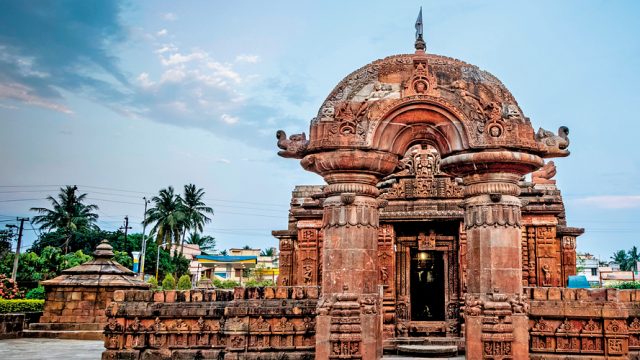Cosmopolitan cities are said to be a product of the 20th century, but Mangalore was a cosmopolitan
The earliest known inscriptions here date to the Satavahanas, a dynasty that ruled peninsular India from the 2nd century BCE to the 3rd century CE. In 1342, Ibn Batuta, the traveller, wrote about Mangalore being situated on the greatest estuary in Malabar. He also noted that over 4,000 Persian and Yemeni traders had made it their home.
Pre-dating the advent of Sanskritised Hinduism in this region were its colourful Bhuta and Naga cults, whose rituals involved worship of spirits that guarded the land, and also the divine serpent. Jain Shantera chiefs built basadis that hug the foothills of the Western Ghats. Sea-faring traders brought Islam in the 8th century CE. Adi Shankara’s Advaita philosophy too resonates from the Mookambika shrine in the Kodachadri Hills in northern Udupi. Madhvacharya’s Dvaita stream flows gently in the temple town of Udupi.
Christian missionaries came here in waves and added yet another layer to the region’s already robust religious mix, leaving behind a valuable commercial and aesthetic legacy, including the eponymous red-hued “Mangalore tiles”.
The Vijayanagara kings, the Portuguese, Haider Ali and his son Tipu, the British — they all came, they saw, they conquered and were conquered by mystical ‘Mangalooru’. Then came the decline of the Vijayanagara Empire, which resulted in the rise of local chieftans, the Keladi, who fought colonial interests but ultimately gave into the Portuguese, allowing them to establish their monopoly in Mangalore in 1658. This monopoly continued till Haider Ali’s rule began in 1763, and in 1799, with Tipu Sultan’s defeat, the British annexed the region.
Things to See & Do
Religion is intertwined with life in Mangalore, as it often is in India. Apart from the legacy of spiritual history that Mangalore showcases so well, look around for South Canara’s cultural inheritance — the crusty old port towns, the awe-inspiring heritage village Manipal and the fragrant medicinal plant farms in Moodabidri.
The beautiful Milagres Church in downtown Hampan katta was built in 1680. It was razed by Tipu Sultan in the 18th century and rebuilt in early 19th century. A hundred years later, the church collapsed due to structural reasons and was rebuilt once again, this time modelled on St Peter’s Cathedral in Rome.
On the outskirts of the city, in Pandeshwar, is the 16th-century Lady Del Rosario Cathedral, rebuilt by the British in 1910. Look out for the ornate wooden pulpit and the royal insignia of the King of Portugal here.

Tucked away on the sprawling campus of Mangalore’s famous college by the same name is the 1885 built St Aloysius Chapel. Every square inch of the walls and domed roof are covered by frescoes, a labour of love by the Jesuit priest, Antonio Moscheni. You might call it chauvinism, but locals happily claim that the intricate paintings rival those of the Sistine Chapel.
In Parangipet, 20 km outside Mangalore, stands a 14th-century church, the Chapel of Montemariano. The cream-coloured building with red trimmings at the base, is considered to be the oldest in the district. Used mostly by the local populace, the church is particularly noted for its two imposing columns gracing the façade.

Built in the 10th century CE, the Kadri Manjunatheswara Temple is amongst the oldest Shiva shrines in the peninsula. The Padmasanastha Lokeswara or Avalokitheswara, as the idol is referred to, is 4 ft tall. Adjoining it is the Manjushri statue at 3 ft. Both are said to match the best of legendary Chola bronze craftsmanship. (Note: In Mahayana Buddhism, which was popular here around the time the temple was built, Avalokiteshwara and Manjushri are highly revered Bodhisattvas). On the Kadri Hills, over the temple, are caves said to have been lived in by the Pandava brothers. The Jogiswara Mutt is nearby.
Timings 5.30 am-12.45 pm; 3-9.30 pm.
At the southern end of the city lies the Mangaladevi Temple. According to the temple lore, King Kundavarman II built the shrine as a mark of piety in 968 CE. It’s linked closely to the Kadri Temple in rituals and practices. A special Swayamvara Parvati Pooja is performed here wherein girls are anointed with gandha (sandalwood paste) in the quest for an ideal mate! Timings 5.30 am-9.30 pm.
The Sharavu Mahaganapathi Temple, in the heart of the city, draws large crowds. Cultural pageants are hosted at regular intervals. Legend speaks of the awe this temple inspired in Tipu Sultan. He gave up plans to ransack it (after a cautionary dream) and took to offering gold every year as a sign of his devotion. Devotees offer Yakshagana, the ritual dance-drama native to the Canara region, as a parake (an offering prayer for a blessing) for a fee. Evenings are also devoted to talamaddale, a narrative rendition minus costumed dancers, derived from the Yakshagana school. Many rich Mangalorean families are known to organise talamaddale in their courtyards. Timings 5.30 am-9.30 pm.
Sultan Bathery
These are ruins of an 18th-century watchtower built by Tipu Sultan. Constructed to prevent enemy boats entering the Gurpura River, the structure is fashioned like a fort.
Old Port Area
Drive down the Boloor Road to the old port area. This single stretch of road ranks as Mangalore’s heritage zone. The city’s trademark tile factories stand on the waterfront. Most are now in disuse except for the grand, century-old Albuquerque Tile Factory. If the sultry heat of the coast hasn’t sapped your energy, walk up the Lighthouse Hill Road. Tipu Sultan commanded the sprawling colonial style villa atop this hill in the 13th century. There’s a spectacular view of the harbour from here. Entry ₹ 2 Timings 9 am-5 pm, Mondays closed.
Shopping
Gold jewellery is what all Mangaloreans swear by. Drop in at Canara and Usha Jewellers in Mangalore, and Aabharana in Udupi. Cashew trees in Mangalore are as versatile as the coconut palm. Visit Fernandes Cashew Factory for a tin of cashews to take back home.
Where to Stay
The Taj Gateway Hotel (Tel: 0824-6660420; Tariff: On request) on Old Port Road, near the Hamilton Circle, has rooms that overlook the estuary. An old city favourite is Hotel Moti Mahal (Tel:2441411; Tariff: ₹ 2,000-6,000) on Falnir Road, near the railway station. It’s the place where rich Mangaloreans still send their children for swimming classes. Hotel Poonja International (Tel: 2440171; Tariff: ₹ 900-4,000, inclusive of breakfast) on KS Rao Road has a snooker club, bar and a roof garden restaurant. Hotel Mangalore International (Tel: 2444860-64; Tariff: ₹ 680-1,750, inclusive of breakfast), in the city centre, has a shopping arcade.
Among resorts, the Summer Sands Beach Resort (Tel: 2467690; Tariff: ₹3,000-16,000) on Ullal Beach, 10 km from Mangalore, is popular for setting and activities.
Where to Eat
Mangalorean food is rich with the spoils of the sea and the ingenuity of its settlers. Some dishes that you must try are the kuduta saaru (the horse gram soup/ rasam) and the meen saaru (the fish-flavoured version). Pulimunchi is exotically tamarind-laced seafood. Try the staple red rice ganji. Many dishes go particularly well with it. Neeru dosa is the fluffiest pancake possible, poured with careless finesse. Padange is another popular breakfast dish. Kozhi (chicken) kaaipu (curry) with kori rotti is awesome. Bangda fry is deservedly famous. The marvai pundi has steamed rice dumplings in a clam curry, flavoured with coconut, mustard, coriander, fenugreek and oora munchi (red chillies). The favourite of the Bunt community is kane, the delicious lady-fish fry. Patrode is an elaborate dish made with colocasia leaves filled with lentils, steamed and/or fried. Tender cashewnut curry is coconut-garnished.
Mangalore has no shortage of eating joints. Do make space for some Catholic cooking, which you can sample at the Pereira Hotel opposite the Government Law College. Try authentic delights like moode, gunda and ragimanni at Hotel Ayodhya. Head for Komal Sweets on Hampankatta Road and stock up on cashewnuts, halwa, chakkuli and sonte (a fried jackfruit savoury). Customers are known to fill up flasks with ice-creams from Ideal. Stock up on jackfruit papad.
Karnataka
Golden Wood Karnataka
Archana Rai





